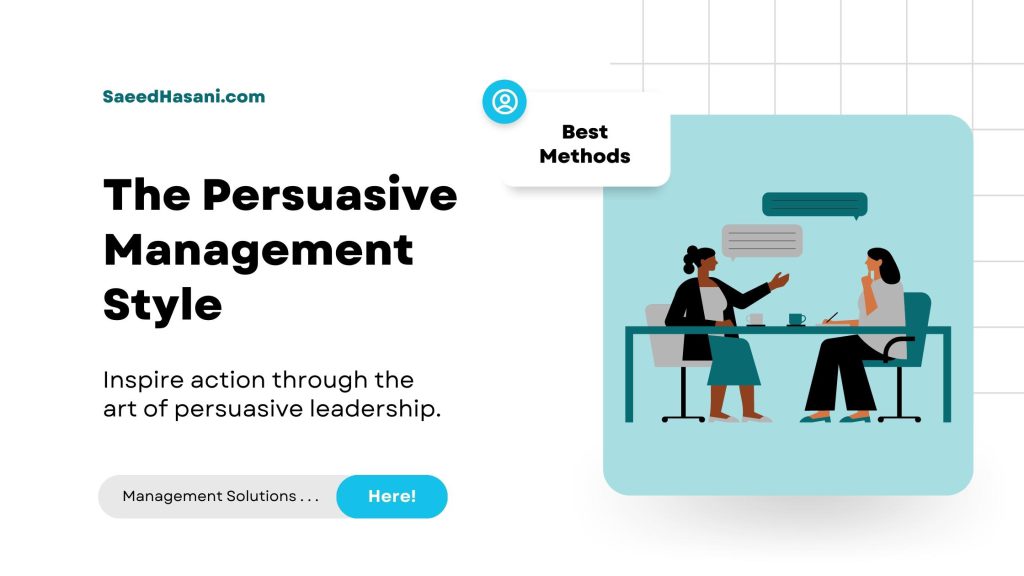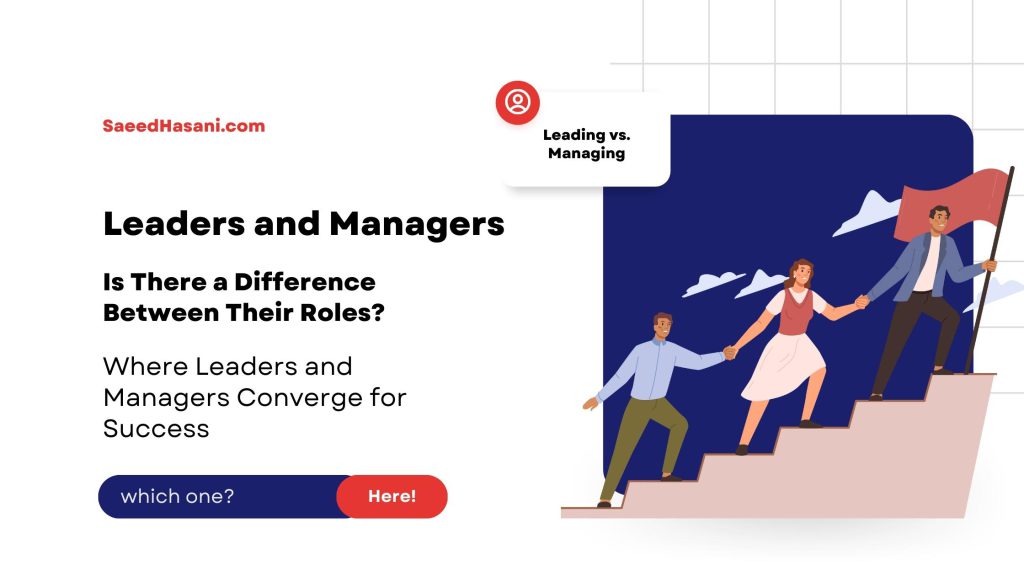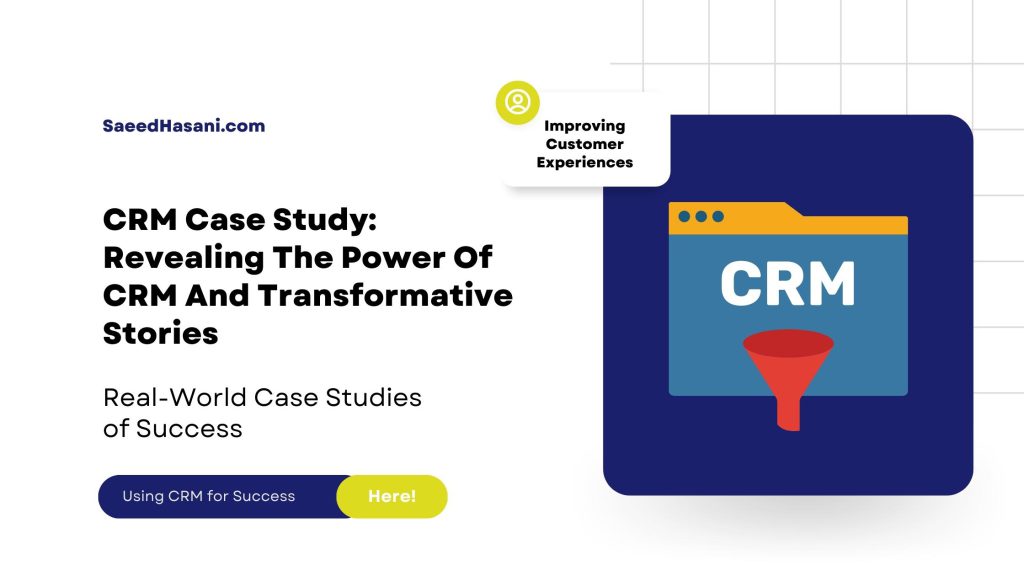Client Relationship Partner: Comprehensive Guide + 15 Ways to Build Strong Relationships!

Are you ready to unlock the full potential of your client relationships? Discover how a Client Relationship Partner can be the linchpin in driving your business success by bridging the gap between your company and your clients.
Learn the essential roles, responsibilities, and skills needed to excel in this dynamic position, ensuring seamless communication and long-term satisfaction.
Content Overview:
Who is a Client Partner?
A Client Partner is essentially the go-to person in a company for managing relationships with clients. Think of them as the bridge between the client and the company. Their job is to ensure that the client’s needs are met while also looking out for the company’s interests.
They often handle things like:
- Understanding the client’s business and goals.
- Providing solutions and services that match those goals.
- Managing the day-to-day communication with the client.
- Working with internal teams to deliver what’s been promised.
- Keeping an eye out for new opportunities to help the client, can also mean more business for the company.
In short, a Client Relationship Partner is like a trusted advisor for the client, making sure everything runs smoothly and both sides are happy.
The Responsibilities of a Client Relationship Partner
A Client Relationship Partner wears a lot of hats to keep clients happy and ensure things run smoothly. Here are some key responsibilities they handle:
- Building Strong Relationships: They spend a lot of time getting to know the clients, understanding their business, and building trust.
- Understanding Client Needs: They stay on top of what the client needs and wants, making sure those needs are clearly communicated to the rest of the team.
- Problem Solving: When issues arise, they jump in to find solutions quickly and effectively, ensuring the client feels supported and valued.
- Coordinating with Internal Teams: They work closely with different departments within their own company to ensure the client’s requirements are being met, whether it’s through product delivery, service implementation, or any other support.
- Strategic Planning: They help clients plan for the future, offering insights and suggestions on how to achieve their long-term goals.
- Monitoring Performance: They keep an eye on how well the company’s services are performing for the client, ensuring everything is on track and up to the client’s expectations.
- Identifying New Opportunities: They look for ways to expand the business relationship, such as introducing new services or products that could benefit the client.
- Regular Communication: They maintain regular contact with the client, providing updates, gathering feedback, and ensuring open lines of communication.
Overall, a Client Relationship Partner is like a dedicated ally for the client within the company, always looking out for their best interests and making sure everything is running smoothly.
11 Ways to Describe the Client Relationship Partner (CRP) Role
Here are 11 ways to describe the Client Relationship Partner (CRP) role:
- Client Advocate: They always put the client’s needs first, ensuring their voice is heard within the company.
- Trusted Advisor: They offer valuable insights and advice to help clients achieve their business goals.
- Problem Solver: They tackle any issues that arise, finding quick and effective solutions to keep things on track.
- Connector: They link clients with the right resources and people within the company to meet their needs.
- Strategic Planner: They help clients plan for the future, aligning company services with the client’s long-term goals.
- Relationship Builder: They focus on building strong, lasting relationships based on trust and mutual benefit.
- Performance Monitor: They keep a close eye on how well services are being delivered, ensuring everything meets the client’s expectations.
- Opportunity Seeker: They look for new ways to add value for the client, identifying opportunities for growth and improvement.
- Communication Hub: They maintain open and regular communication, keeping clients informed and gathering feedback.
- Negotiator: They work out the details of contracts and agreements, making sure both parties are happy with the terms.
- Crisis Manager: They step in when things go wrong, managing crises and ensuring the client feels supported throughout the process.
A CRP is a multifaceted role that requires a blend of strategic thinking, excellent communication, and a strong focus on client satisfaction.
The Best Way to Become a Client Partner
Here’s a guide on how to become a Client Partner:
1. Build a Strong Foundation
Start by gaining experience in customer-facing roles. Jobs in sales, account management, or customer service are great stepping stones. These roles teach you how to understand client needs, communicate effectively, and build relationships.
2. Develop Industry Knowledge
Having deep knowledge of the industry you want to work in is crucial. This means staying up-to-date with industry trends, knowing the competitive landscape, and understanding the specific challenges and needs of your clients.
3. Hone Your Communication Skills
Being a Client Relationship Partner is all about effective communication. Practice your listening skills, learn to articulate your thoughts clearly, and develop the ability to present ideas persuasively.
4. Focus on Relationship Building
Cultivate strong relationships wherever you go. Networking is key. Attend industry events, engage in online communities, and build a reputation as someone who is trustworthy and reliable.
5. Learn to Solve Problems
Problem-solving is a big part of the job. Work on developing a proactive mindset. When faced with a challenge, think about how you can turn it into an opportunity.
6. Get Strategic
Understand the bigger picture. Learn about business strategy, financial metrics, and how different parts of a business interconnect. This helps you provide more value to your clients and align their goals with your company’s offerings.
7. Seek Mentorship
Find a mentor who is already in a Client Relationship Partner role or a similar position. They can provide valuable insights, guidance, and support as you navigate your career path.
8. Show Initiative
Take on responsibilities that allow you to demonstrate your ability to manage client relationships. Volunteer for projects that put you in direct contact with clients and show that you can deliver results.
9. Get Certified
Consider obtaining relevant certifications. There are various certifications in account management, project management, and specific industry certifications that can bolster your resume.
10. Be Patient and Persistent
Becoming a Client Partner doesn’t happen overnight. It takes time to build the necessary skills and experience. Stay patient, keep learning, and be persistent in pursuing opportunities.
11. Highlight Your Achievements
When applying for Client Relationship Partner roles, make sure your resume and LinkedIn profile highlight your achievements. Focus on how you’ve successfully managed client relationships, solved problems, and contributed to business growth.
Becoming a Client Partner involves a mix of gaining relevant experience, developing key skills, and building strong relationships. Stay focused, keep learning, and always look for ways to add value for your clients.
Client Partner Job Description
Are you a natural relationship builder with a knack for understanding client needs? As a Client Relationship Partner, you’ll be the go-to person for our clients, ensuring they receive top-notch service and support.
You’ll work closely with internal teams to deliver solutions that help our clients achieve their goals. If you’re proactive, strategic, and passionate about making a difference, this role is for you!
Key Responsibilities:
- Client Relationship Management: Build and maintain strong, long-lasting relationships with clients. Be their trusted advisor and primary point of contact.
- Needs Assessment: Understand and anticipate client needs, ensuring our services align with their business objectives.
- Strategic Planning: Collaborate with clients to develop strategic plans that leverage our offerings to meet their goals.
- Problem Solving: Address client issues and challenges swiftly, finding effective solutions to keep everything on track.
- Internal Coordination: Work with internal teams to ensure the timely and successful delivery of our solutions according to client needs and objectives.
- Performance Monitoring: Track and report on key account metrics, ensuring we’re meeting or exceeding client expectations.
- Opportunity Identification: Identify new business opportunities within existing accounts and work to expand our relationships.
- Communication: Maintain regular communication with clients, providing updates, gathering feedback, and ensuring they’re informed and satisfied.
- Contract Management: Assist in negotiating and finalizing contracts, ensuring mutually beneficial agreements.
What We’re Looking For:
- Experience: Proven experience in a client-facing role, such as account management, sales, or customer service.
- Industry Knowledge: Deep understanding of our industry and the unique challenges our clients face.
- Communication Skills: Excellent verbal and written communication skills. Ability to present ideas clearly and persuasively.
- Problem-Solving Skills: Strong analytical and problem-solving abilities. A proactive approach to identifying and addressing issues.
- Relationship Building: A natural ability to build and maintain strong relationships. Trustworthy, personable, and reliable.
- Strategic Thinking: Ability to think strategically about client needs and how our services can help achieve their goals.
- Team Player: Comfortable working with cross-functional teams to deliver solutions.
What We Offer:
- Competitive Salary: Attractive compensation package with performance-based incentives.
- Professional Growth: Opportunities for professional development and career advancement.
- Supportive Environment: A collaborative and supportive work culture where your contributions are valued.
- Benefits: Comprehensive benefits package, including health insurance, retirement plans, and paid time off.
Join us and be part of a dynamic team that’s dedicated to helping our clients succeed. If you’re passionate about building strong client relationships and delivering exceptional service, we’d love to hear from you!
Typical Qualifications Required to Apply for the Position of Client Partner
When applying for a Client Relationship Partner position, here’s what most employers are looking for:
Educational Background:
- Bachelor’s Degree: A degree in Business, Marketing, Communications, or a related field is usually required. Some companies might prefer a master’s degree for more senior roles.
- Relevant Certifications: While not always required, certifications in areas like account management, project management (PMP), or specific industry certifications can be a plus.
Experience:
- Client-Facing Roles: At least 5-7 years of experience in roles that involve direct interaction with clients, such as account management, sales, customer service, or consulting.
- Industry Experience: Familiarity with the specific industry in which the company operates. Deep knowledge of industry trends, challenges, and best practices is often crucial.
- Proven Track Record: Demonstrated success in managing and growing client accounts, with evidence of achieving or exceeding targets.
Skills:
- Communication Skills: Excellent verbal and written communication abilities. You should be comfortable presenting ideas, negotiating terms, and handling difficult conversations with tact and professionalism.
- Relationship Building: Strong interpersonal skills with a knack for building and maintaining long-term relationships.
- Strategic Thinking: Ability to think strategically about client needs and align them with the company’s offerings.
- Problem-Solving: Strong analytical skills to identify problems and develop effective solutions quickly.
- Project Management: Competence in managing multiple projects simultaneously, ensuring timely and successful delivery of solutions.
- Negotiation Skills: Ability to negotiate contracts and agreements that are beneficial for both the client and the company.
Personal Attributes:
- Proactive Attitude: A go-getter who anticipates client needs and takes the initiative to address them.
- Adaptability: Ability to thrive in a fast-paced environment and handle changing priorities with ease.
- Team Player: Someone who collaborates well with cross-functional teams to deliver client solutions.
- Customer-Centric Mindset: A genuine passion for helping clients succeed and a commitment to providing exceptional service.
Technical Proficiency:
- CRM Systems: Familiarity with Customer Relationship Management (CRM) software, such as Salesforce or HubSpot.
- Office Software: Proficiency in Microsoft Office Suite (Word, Excel, PowerPoint) and other relevant software tools.
Becoming a Client Relationship Partner requires a blend of educational background, relevant experience, and a diverse skill set focused on communication, relationship building, and strategic thinking. If you tick these boxes, you’ll be well on your way to qualifying for this dynamic role!
Client Partners’ Career Paths
Let’s talk about the career path of a Client Relationship Partner! It’s a journey that combines experience, skills, and a lot of relationship-building. Here’s a typical progression:
1. Entry-Level Roles
- Sales Representative or Account Executive: Start off in roles where you’re directly interacting with clients and learning the ropes of client management and sales.
- Customer Support or Service: Gaining experience in these roles helps you understand client needs and how to address their concerns effectively.
2. Mid-Level Roles
- Account Manager or Client Manager: In these positions, you’ll manage relationships with multiple clients, ensuring their needs are met and they’re satisfied with your company’s products or services.
- Sales Manager: Overseeing a team of sales reps or account executives, honing your leadership skills while still maintaining some client-facing responsibilities.
3. Senior-Level Roles
- Senior Account Manager: Taking on larger, more complex accounts and potentially mentoring junior account managers.
- Business Development Manager: Focusing on finding new business opportunities and expanding existing client relationships.
4. Client Partner
- Client Partner: At this stage, you’re the strategic advisor for your clients. You’re responsible for building long-term relationships, ensuring clients achieve their business goals with your company’s help, and identifying new opportunities for growth.
5. Executive Roles
- Director of Client Services: Overseeing a team of Client Partners or Account Managers, setting strategies for client management, and ensuring high levels of client satisfaction across the board.
- Vice President of Client Relations: Playing a key role in shaping the company’s client relationship strategy at a high level, managing a large team, and working closely with other executives to align client goals with company objectives.
Along the Way:
- Professional Development: Continually enhance your skills through training, certifications, and keeping up with industry trends.
- Networking: Build a strong professional network within your industry. Attend events, join relevant groups, and engage in online communities.
- Mentorship: Both finding mentors and becoming one can significantly boost your career. Learning from those who’ve been there and done that can provide invaluable insights.
- Adaptability: The business world is always changing, so being adaptable and open to new ways of working is crucial.
Tips for Success:
- Focus on Relationships: The heart of a Client Partner’s role is relationships. Invest time in building and nurturing them.
- Be Proactive: Always look for ways to add value to your clients. Anticipate their needs and offer solutions before they ask.
- Stay Informed: Keep up with industry trends, new technologies, and best practices. Being knowledgeable helps you provide better advice to your clients.
- Balance Short-Term and Long-Term Goals: It’s important to deliver on immediate needs while also planning for the future. This dual focus will help your clients grow sustainably.
The career path of a Client Relationship Partner is dynamic and rewarding, offering opportunities to make a significant impact on both your clients and your company. Stay dedicated, keep learning, and always strive to build strong, trust-based relationships.
Examples of Client Partners
Sure, let’s look at a few examples of what Client Partners do across different industries. This will give you a better sense of the role in action:
1. Tech Industry: Software Solutions
Imagine a Client Relationship Partner at a software company like Salesforce. They work closely with clients to understand their CRM needs, helping them implement and customize Salesforce solutions to improve their sales and customer service processes.
They regularly check in to ensure the software is delivering value, provide training sessions, and suggest additional features or upgrades as the client’s business grows.
2. Marketing and Advertising: Digital Marketing Agency
A Client Partner in a digital marketing agency might work with a range of clients from different industries. They help develop marketing strategies, oversee campaign execution, and ensure that the client’s brand message is effectively communicated.
They analyze campaign performance data, provide insights, and recommend adjustments to maximize ROI.
3. Financial Services: Wealth Management Firm
In a wealth management firm, a Client Relationship Partner would manage relationships with high-net-worth individuals. They offer personalized investment advice, help clients plan for retirement, and manage their portfolios.
They stay informed about market trends, communicate regularly with clients about their financial goals, and adjust strategies as needed to meet those goals.
4. Consulting: Management Consulting
At a management consulting firm like McKinsey or Deloitte, a Client Partner works on long-term projects with clients, helping them solve complex business problems. They might assist a client in restructuring their organization, improving operational efficiency, or developing a new market entry strategy.
They coordinate teams of consultants, ensure the project stays on track, and maintain a strong relationship with the client’s leadership team.
5. Healthcare: Health Tech Company
In a health tech company providing electronic health record (EHR) systems, a Client Relationship Partner works with hospitals and clinics. They ensure the EHR system is tailored to the specific needs of each healthcare provider, oversee the implementation process, and provide ongoing support and training.
They also gather feedback to improve the product and suggest new features based on the client’s evolving needs.
6. Retail: E-commerce Platform
For an e-commerce platform like Shopify, a Client Partner helps large retailers set up and optimize their online stores. They provide strategic advice on improving the user experience, increasing sales, and utilizing analytics tools to track performance.
They also assist in integrating third-party applications and services to enhance the platform’s functionality.
7. Telecommunications: Telecom Service Provider
A Client Relationship Partner at a telecom company like AT&T works with corporate clients to manage their communication needs. They might help set up enterprise-level communication systems, provide solutions for remote work, and ensure reliable service.
They also propose upgrades and new technologies to improve efficiency and reduce costs.
Key Traits Across All Examples:
- Deep Industry Knowledge: Understanding the specific needs and challenges of the industry they work in.
- Strong Communication Skills: Keeping clients informed and engaged, and clearly conveying complex information.
- Problem-Solving Ability: Quickly addressing issues and finding effective solutions.
- Strategic Thinking: Helping clients plan for the future and aligning solutions with their long-term goals.
- Proactive Approach: Anticipating client needs and offering solutions before issues arise.
These examples illustrate how diverse and impactful the role of a Client Partner can be, depending on the industry and the specific needs of their clients.
15 Ways to Build Strong Relationships with Clients
Building strong relationships with clients is key to being successful in a Client Relationship Partner role. Here are 15 ways to do just that:
1. Listen Actively
Show genuine interest in what your clients have to say. Listen to their concerns, needs, and feedback without interrupting.
2. Communicate Regularly
Keep in touch with your clients consistently. Regular updates, check-ins, and casual conversations help keep the relationship warm and productive.
3. Be Transparent
Honesty builds trust. Be open about what’s possible, what’s not, and any challenges you foresee. Transparency fosters trust and credibility.
4. Understand Their Business
Deeply understand your client’s industry, business model, and challenges. The more you know, the better you can serve them.
5. Provide Value
Continuously look for ways to add value to your client’s business. This could be through innovative solutions, useful insights, or helpful resources.
6. Be Proactive
Anticipate your client’s needs and address them before they become issues. Proactivity shows that you’re always thinking ahead for them.
7. Personalize Your Approach
Every client is unique. Tailor your interactions and solutions to meet their specific needs and preferences.
8. Follow Through
If you make a promise, keep it. Deliver your commitments and follow through on actions to build reliability and trust.
9. Show Appreciation
Express gratitude for their business. Small gestures like thank-you notes, appreciation emails, or even small gifts can go a long way.
10. Be a Problem Solver
When issues arise, address them promptly and effectively. Show that you’re capable of handling problems and turning them into opportunities.
11. Provide Regular Updates
Keep clients informed about the progress of their projects. Regular updates build confidence and show that you’re on top of things.
12. Seek Feedback
Regularly ask for feedback and take it seriously. It shows that you value their opinion and are committed to improving their experience.
13. Build Personal Connections
Get to know your clients beyond business. Remembering birthdays, anniversaries, or even their favorite hobbies can strengthen your relationship.
14. Stay Positive
Maintain a positive attitude, even in challenging situations. Positivity is contagious and helps build a friendly and constructive relationship.
15. Be Available
Make yourself accessible. Whether it’s via phone, email, or in person, ensure your clients know they can reach you when they need to.
Building strong relationships with clients is all about showing them that you genuinely care about their success and well-being. When clients feel valued and understood, they’re more likely to stick around and trust you with their business.
Conclusion
A Client Relationship Partner plays a pivotal role in bridging the gap between clients and a company, ensuring both parties’ needs and goals are met efficiently. They are essential in building and maintaining strong, trust-based relationships while strategically planning and proactively addressing client needs.
By combining industry knowledge, excellent communication skills, and a proactive mindset, a Client Partner ensures a harmonious and beneficial partnership that drives business growth and client satisfaction.







Responses